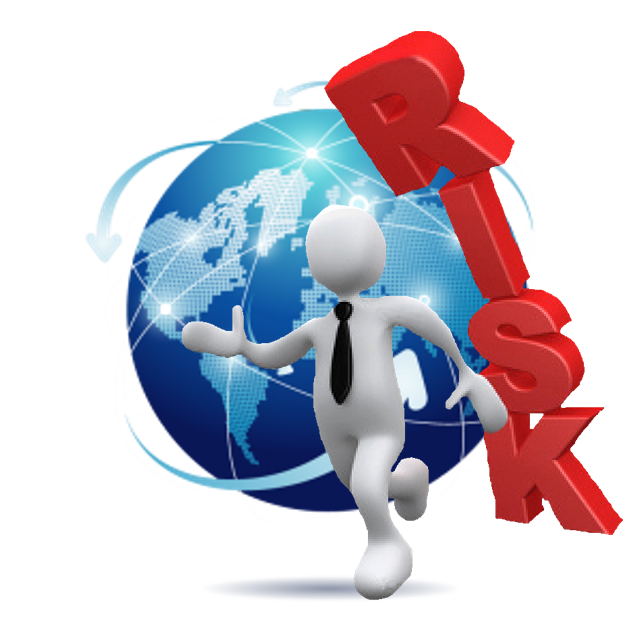Supply chain risk management (SCRM) is often discussed in terms of prevention, mitigation, and recovery. Prevention, of course, is the most cost effective course of action. The medical community is fond of repeating an adage attributed to the 16th century Dutch philosopher Desiderius Erasmus, “Prevention is better than cure.” Supply chain risk managers undoubtedly agree with that sentiment. They also know, however, that regardless of their best efforts many risks simply can’t be prevented because most of those risks are out of their control. Thomas staff writers note, “A robust supply chain minimizes disruption, which can cost delivering companies significant amounts of time and money, in addition to tarnishing their reputation. Consistency in the supply chain is crucial to a company’s overall performance.”[1] They then ask, “Can [a robust supply chain] be attained when the factors that drive it seem to be out of the company’s direct control?” The simple fact is: The more global a supply chain the more difficult it is to make it resilient or robust.
Global supply chains make resilience more challenging
Procurement expert Kelly Barner notes, “Supply chain managers know full well just how reliant their company is on the performance of third parties. It is a challenge to get visibility through the multiple tiers of the supply chain. Crossing geographic borders and cultural boundaries only makes the task more complex.”[2] Global risks, however, don’t come only from third party suppliers. The more global a supply chain is the more likely it is to encounter political risks, natural disasters, economic risks, and the like. In addition to common risks, each economic sector faces risks unique to that sector, be they shortages of natural resources or lack of cold supply chain infrastructure. Timothy Lozier, director of product strategy at EtQ, explains, “As business becomes more global, effective and efficient, supply chain management is more vital than ever. Even if you’ve optimized your supply chain, uncertainty can cause issues when sourcing raw materials, goods and services, which could ultimately impact on your business, customers, revenue and reputation.”[3] Lozier provides a thoughtful list of potential areas of risk facing supply chain professionals. The risks include:
- Supplier risks (such as, poor quality parts or resources, slave labor, insolvency)
- Economic risks (such as pricing volatility, trade wars)
- Environmental risks (such a climate change, natural disasters)
- Cultural risks (such as language barriers, local sensitivities, unrest)
- Transportation and distribution risks (such as lack of infrastructure or capacity)
Although the challenges are many, some common sense steps and leveraging cognitive technologies can help with prevention, mitigation, and recovery efforts.
Improving supply chain resilience
Barner notes, “Consumers want to buy from companies that share their standards and ethics.” The first step to a more resilient supply chain is having the right corporate policies in place and then ensuring those policies are upheld in practice. Along those lines, continuity of operations plans and disaster recovery plans also need to be developed and routinely exercised. Concerning contingency plans, Jason Campbell, Product Manager of Supply Chain at Command Alkon, recommends asking three questions: “Do you have a contingency plan for dealing with unexpected or planned-for issues or supply chain events or emergencies? If so, when was the last time you reviewed your plans? Do you need new leadership or members on your planning team or KPIs that help you address any supply chain issues that could impact your business?” Thomas staff writers add, “The risk to your supply chain is inherent, and can’t be completely mitigated. Instead, you must plan for catastrophe and have a contingency plan in place so that you can still meet the needs of your customers even when disaster strikes. Supply chain diversification, regionalization, and segmentation are all effective ways to offset supply chain interruption.” They offer a few other suggestions that can make your supply chain more resilient. They are:
Build Strong Relationships. “The relationships between your organization and suppliers, and also between your supply chain management team and the rest of the stakeholders within your organization, are a key factor in building and maintaining a strong supply chain.” Lozier believes good relationships include a Reaganesque “trust but verify” approach. He believes you must ensure “you have robust contracts in place that clearly define the relationship.”
Communicate Clearly. “Suppliers can’t deliver in the way that is most effective for your organization if they don’t have a very good idea of what it is that your organization needs from them.” Campbell adds, “Adopt tools that allow you to easily complete business transactions, run reports, automate tasks, regain efficiencies and eliminate wasted time.”
Diversify Your Supply Chain. “Keep strong relationships with several suppliers to ensure that you can maintain continuity in your supply chain. Having good relationships with several reliable suppliers can also help encourage healthy competition, netting you the best prices and services available.” Redundancy may come with a price tag; but, redundancy always makes a supply chain more robust. Campbell adds, “Your healthy supply chain includes addressing the challenge your business faces if your suppliers can’t supply the raw materials you need on time in the right amount. Work with your procurement department to determine your options, which might include working with a consortium to learn more about procurement best practices or ordering and storing more product at a more-efficient location.”
Start With Good Data. “When your numbers are off,” the Thomas staff writers note, “you and your supplier are bound to suffer losses. Make sure that the numbers from which you draw your forecasts are accurate and that you’ve contemplated potential demand from every angle.” We live in the Digital Age and most supply chains are working towards becoming completely digitized. New technologies, like cognitive computing and blockchain, can be leveraged to make sure your data is put to work in the best possible way.
Institute Integrated Systems. “Today’s sophisticated software solutions allow for more effective, streamlined supply chains. Use systems that collect, integrate, and analyze data so that it can be distributed to all stakeholders in your organization in a way that allows educated decisions to be made at all levels. An accurate picture of suppliers is necessary to anticipate their value. Automation of processes through high-quality software also reduces strain on the workforce, cuts down on the margin of error, and allows for more effective use of resources.” Campbell adds, “This ‘central source of truth’ assures all parties are viewing the same data, nipping miscommunication in the bud.”
Balance Flexibility and Resiliency with Cost Effectiveness. “Flexibility and resiliency are major factors in a healthy supply chain. Flexibility means more supplier options and potentially lower costs when standard products are used instead of customized ones. Resiliency means that you’re better able to endure and recover from incidences that would normally cause catastrophic interruption of your supply chain.”
Concluding thoughts
Effective supply chain risk management processes are like insurance policies — they seem costly until you need them. Thomas staff writers explain, “Sometimes, building a more robust supply chain will cost you, and you won’t necessarily see the benefits afforded by increasing resiliency and flexibility until something disastrous happens and you realize you’re able to cope. ‘Cheap’ can’t be the end-all-be-all when building a robust supply chain; this kind of thinking doesn’t account for mitigating the risk of disruption and implied risks inherent to other areas of the business, like legal and compliance.” Lozier adds, “When you’re managing risk in the supply chain, it is vital to capture all potential issues and prioritize them in terms of likelihood, impact and any other variables that are critical to your business. You can then get risk mitigation plans in place, and ensure your stakeholders and cross-functional teams have the resources they need to resolve your supply chain risks.”
Footnotes
[1] Staff, “7 Tips for Building a Robust Supply Chain,” Thomas, 29 October 2018.
[2] Kelly Barner, “Policy or Practice? Supply Chain Risk Management in Reality,” All Things Supply Chain, 29 October 2018.
[3] Timothy Lozier, “How to Mitigate Risks and Issues in Your Supply Chain,” Food Safety Tech, 16 October 2016.
[4] Jason Campbell, “Seven Steps to Mitigate Risks in the Construction Supply Chain,” Supply & Demand Chain Executive, 5 November 2018.





